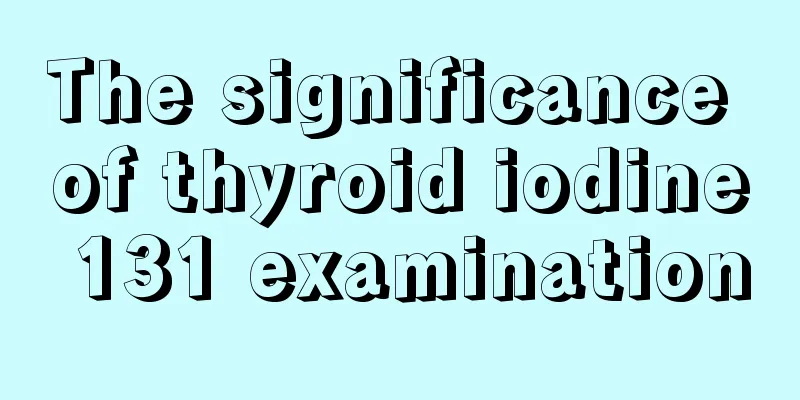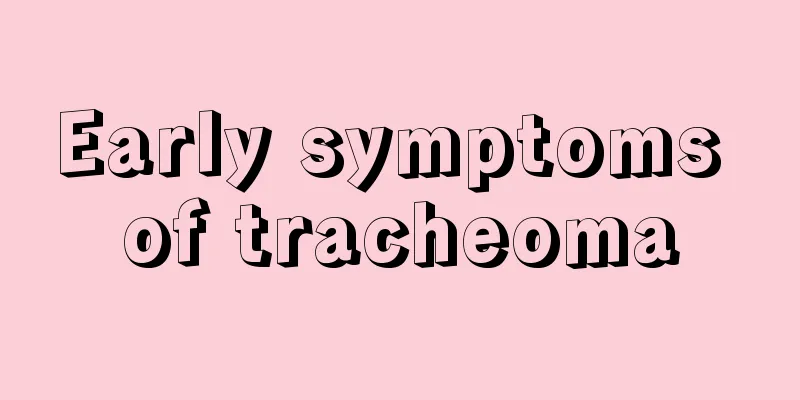The significance of thyroid iodine 131 examination

|
There are many medical tests that people don’t understand their specific functions, just like the significance of thyroid iodine 121 test is unknown to many people. Thyroid iodine 131 is mainly used to check the changes in radioactive counts in the human thyroid area to understand the thyroid function. This is a basis for determining whether the thyroid function is hypothyroid or hyperthyroid. Let’s learn more about it together~ 1. Thyroid 131 Iodine Uptake Test The principle of the 131I thyroid uptake test is as follows: iodine is one of the raw materials for the thyroid gland to synthesize thyroid hormones. Radioactive 131I can also be taken up and participate in the synthesis of thyroid hormones. The amount and speed of its uptake are closely related to thyroid function. By introducing 131I into the subject's body and using an in vitro detection instrument to measure the changes in the radioactive count in the thyroid area, we can understand the uptake of 131I by the thyroid gland and thus determine the function of the thyroid gland. 2. Normal value Each hospital has its own normal reference value. Generally, the 2-hour I rate is 10%-30%, 4-hour 15%-40%, and 24-hour 25%-60%. Women have higher rates than men, and children and adolescents have higher rates than adults. Although the normal range may vary, the overall change pattern of the 24-hour thyroid uptake rate can be used to diagnose thyroid disease. In normal people, the thyroid uptake rate gradually increases over time and reaches a peak in 24 hours. 3. Clinical significance Abnormal results: (1) Hyperthyroidism, also known as toxic diffuse goiter and Graves' disease, is an autoimmune disease. Symptoms may include intolerance to heat, excessive sweating, excitement, increased appetite, accompanied by weight loss, tachycardia, special eye signs (exophthalmos), thyroid enlargement, thyroid vascular murmurs, tremor, etc. Basal metabolic rate (BMR) measurement and thyroid radionuclide computed tomography (ECT) are of diagnostic value. (2) Hypothyroidism. It is caused by insufficient synthesis or secretion of thyroid hormone. It is divided into three types according to the age of onset, namely cretinism, juvenile and adult hypothyroidism (called myxedema when severe), and the clinical manifestations may be different. People who need to be examined: patients with abnormal thyroid function. IV. Precautions Unsuitable groups: pregnant and lactating women. Note before the examination: pay attention to a normal diet, a normal work and rest schedule, and prevent endocrine disorders. Requirements during examination: Actively cooperate with the doctor's requirements. |
>>: Does the thyroid gland affect the heart
Recommend
The dangers of laser mole removal
Does laser mole removal really work? People nowad...
Is it good to drink purified water for a long time
Everyone thinks that purified water is the cleane...
What is the normal platelet count?
Anyone who has some knowledge of human physiology...
How long after taking the cervical cancer vaccine can I get pregnant? The body reaches its best condition
After receiving the cervical cancer vaccine, wome...
The body organ corresponding to the thumb
There is an old saying that the ten fingers are c...
What kind of exercise can be done to treat intestinal cancer
Although the incidence of rectal cancer is gettin...
What are Alkyl Betaines?
Alkyl betaine, as the name suggests, is an alkali...
What are the advantages and disadvantages of TCM in treating bladder cancer
In recent years, bladder cancer has become one of...
What should I eat to improve my memory?
The nutrition in food has a great impact on the h...
What is the reason for eye mucus?
Studies have shown that many children have freque...
Why is my head cold and I'm sweating?
For some babies, they may experience problems wit...
The early symptoms of cardia cancer are mild and occur intermittently
Early symptoms of cardia cancer are often caused ...
How to wash off oil stains
Children are very naughty by nature, and eating w...
What are the diagnostic criteria for primary liver cancer? Pay attention to these symptoms of primary liver cancer
Liver cancer is one of the most frightening and d...
What to do if you have pain in the inner thigh
Pain in the inner thigh muscles is a common sympt...









